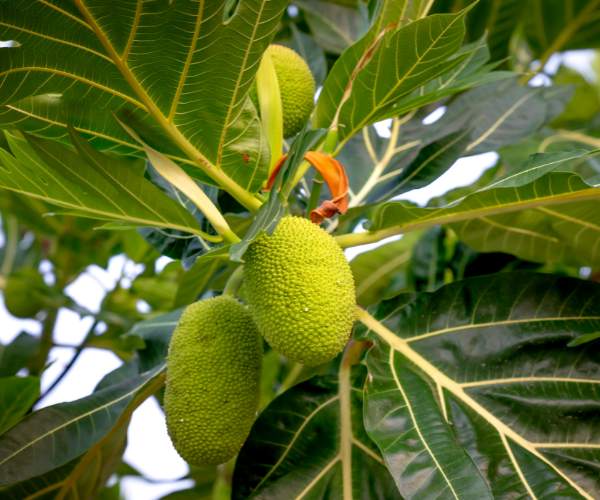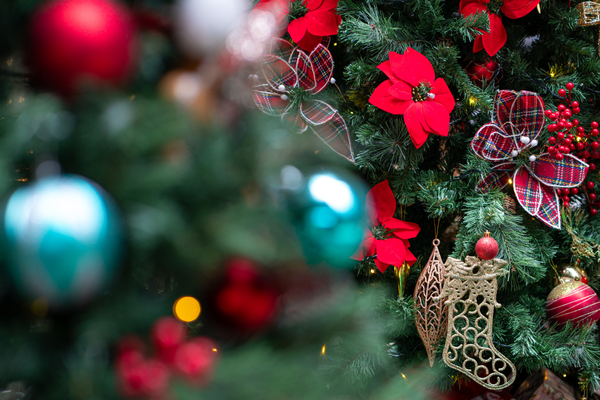The Ceylon Breadfruit Tree: An Endemic Sri Lankan Treasure – By Nadeeka – eLanka

The Ceylon breadfruit tree, known in Sri Lanka as “Del” or “Wal-Del”, is one of the island’s most beautiful and valuable endemic trees. Its scientific name, Artocarpus nobilis, reveals its noble status among Sri Lanka’s native flora. Belonging to the Moraceae family, the same family as jackfruit and mulberry, this evergreen giant can reach heights of up to 25 metres and is found mainly in the wet and intermediate zones of the country. The Del tree is an essential part of Sri Lankan biodiversity, heritage, and daily life, offering shade, food, medicine, and strong timber for generations.
The Del tree is recognized by its large, dark green leaves which are glossy on top and lighter beneath. Young plants have deeply lobed leaves, while mature trees develop broader, smooth leaves. When the bark or branches are cut, the tree produces a thick, milky latex. Its fruits are long, cylindrical, and covered with small pointed projections, turning yellowish when mature. Inside, the fruit contains numerous seeds surrounded by a fibrous edible pulp. Both the seeds and pulp have been part of Sri Lankan diets for centuries, especially in rural areas where the tree is commonly found near homesteads.
Endemic to Sri Lanka, Artocarpus nobilis is found only on this island and nowhere else in the world. It thrives in humid environments and prefers well-drained soils. In the wild, it grows in the understory of wet evergreen forests, while villagers also plant it in home gardens for its many uses. In Sinhala, the tree has several local names such as Wal-Del, Bedi-Del, and Hingala-Del, while in Tamil it is known as Irappala. English speakers call it the Ceylon breadfruit tree, although it is distinct from the commonly cultivated breadfruit (Artocarpus altilis).
The tree’s edible seeds are one of its most valuable parts. When roasted or boiled, they resemble chestnuts in flavour and texture. Modern studies by Sri Lankan researchers have found that Del seeds are rich in protein, fibre, and essential minerals such as potassium, magnesium, and iron. They also contain beneficial fatty acids and natural antioxidants that help fight inflammation and may support heart health. Because of this nutritional profile, scientists believe the seeds could be developed as a sustainable food source or health product. Traditional Sri Lankan households often roast the seeds as a snack or boil them in curries, highlighting how ancient practices already recognized their value.
The fruit of the Del tree, though not as widely eaten as jackfruit or regular breadfruit, is also edible when cooked. It is sometimes used in local cuisine as a boiled or curried vegetable, especially in remote areas. The tree’s latex has been used as a natural adhesive, and its large leaves can serve as eco-friendly wrappers for food. The trunk of the Del tree yields a high-quality timber that is durable, moderately heavy, and resistant to decay. This makes it valuable for furniture, construction, and traditional wooden crafts. For centuries, Sri Lankans have relied on Del timber for strong beams and tools that last generations.
Beyond its practical uses, the Del tree has deep cultural and medicinal importance. In Ayurveda and folk medicine, nearly every part of the plant is used. The bark is prepared as a decoction to treat wounds, ulcers, and skin diseases. The latex is applied externally to heal cracked skin and fungal infections. The seeds and leaves are sometimes used in remedies for respiratory conditions, digestive problems, and intestinal worms. Scientific studies have confirmed that extracts from Artocarpus nobilis contain bioactive compounds such as flavonoids, xanthones, and phenolic acids, which show antioxidant, anti-inflammatory, and antibacterial properties. These discoveries prove that the traditional knowledge surrounding the tree has genuine pharmacological value.
However, despite its usefulness, the Ceylon breadfruit tree faces several challenges. Being endemic to Sri Lanka means that its entire natural population is restricted to one island. Deforestation, land conversion for agriculture, and timber extraction have all contributed to habitat loss. In some areas, the tree is cut down for its valuable wood faster than it can regenerate. Diseases like white root rot also pose threats. As a result, conservation organizations such as the IUCN list Artocarpus nobilis as a vulnerable species. Protecting this tree is therefore crucial not only for ecological balance but also for preserving Sri Lanka’s natural heritage.
Conservation can be achieved through a combination of reforestation and sustainable cultivation. Encouraging farmers and homeowners to plant Del trees in agroforestry systems can provide both environmental and economic benefits. Because the tree grows tall and wide, it offers excellent shade for understory crops, while its fruits and seeds can provide food or income. Seed propagation is simple when fresh seeds are used, and young plants thrive in moist, fertile soil. Once established, the tree requires little maintenance and can live for decades. By promoting its use as a nutritious seed crop and sustainable timber source, Sri Lanka can ensure that Artocarpus nobilis remains abundant for future generations.
Beyond its ecological and practical importance, the Del tree also carries symbolic meaning. It represents resilience, rootedness, and quiet abundance—values that reflect the spirit of Sri Lanka’s rural communities. Villagers often associate large trees like Del with protection, generosity, and continuity, as they shelter homes and nourish families for years. In today’s world of rapid urbanization, rediscovering and preserving such species offers a reminder of harmony between humans and nature.
The potential for developing Del into a sustainable commercial crop is promising. With global interest in plant-based nutrition and natural antioxidants, the seeds of Artocarpus nobilis could find a place in health food markets. Processed seed flours, roasted snacks, or functional beverages made from Del could attract consumers seeking organic and traditional alternatives. Moreover, the timber industry can adopt responsible harvesting and replanting programs to maintain supply without harming ecosystems. Such innovations would not only support Sri Lanka’s green economy but also raise awareness of this endemic gem.
In summary, the Ceylon breadfruit tree, or Del, is more than just a forest species—it is a living symbol of Sri Lanka’s natural beauty, wisdom, and potential. From its nutritious seeds and healing bark to its durable wood and ecological role, every aspect of Artocarpus nobilis contributes to the balance between humans and their environment. Protecting and promoting this tree means celebrating an ancient connection to the land while embracing modern sustainability. As people worldwide look for climate-resilient and culturally rich crops, Sri Lanka’s noble Del tree stands tall as both guardian and gift.




















